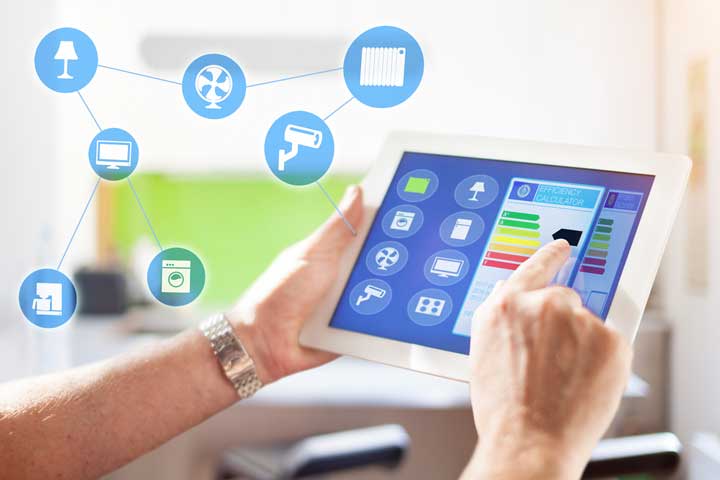
[ad_1]
Building automation systems have gained a lot of traction in the last few years as they offer various advantages ranging from enhanced energy efficiency, improved security, and increased occupancy comfort. Lighting control systems, access control and security systems, etc. are few of the many components of a building automation system which help in constructing a truly ‘smart’ building.
Princy A. J |
August 23, 2022

New-age advanced technologies like Artificial Intelligence, Internet of Things, blockchain technology, and big data have changed the way humans have been living their lives. From space travel or ‘smart’ cities, these technologies have opened such avenues and opportunities which were hitherto unknown to human beings. The intense research and growing technological needs of individuals and various industries has further facilitated this paradigm shift. One such industry which is on the cusp of an overhaul is the construction and architecture sector; and the technology which is driving this change is the building automation system.
What is Building Automation System and What are its Components?
Building automation systems, by using control systems and automation methods, help in complete monitoring and control of various integral systems that are part of ‘smart’ buildings such as security access, CCTVs, lighting, alarms, HVAC (Heating, Ventilation, and Air Conditioning), etc. Building automation systems can be installed in almost all types of buildings such as residential, commercial, governmental, and also in hospitality structures.
At the component level, building automation systems include lighting control systems, HVAC systems, IoT devices, ‘smart’ plumbing systems, etc. Some of these components are described below:
- Lighting Control Systems
At the simplest level, ‘smart’ lighting systems regulate lighting by turning on the lights when a person walks into the room and switching them off automatically when the person walks out it. This is done with the help of occupancy sensors which sense motion in the room and regulate lighting in the room accordingly. Some building automation systems also employ photosensors for controlling the lighting; photosensors detect the amount of sunlight in the room and control the lighting in the room accordingly. Timers are also used in certain cases wherein schedule can be set so as to regulate the lighting accordingly. Some of the major companies in the lighting control sub-segment of the global building automation system market include Philips, Syska, Panasonic, etc.
- Access Control and Security Systems
Access control and security systems basically help in granting or restricting the access of a person to a building with the help of smart cards, smart doors, digital locks, sensor barriers, etc. Access control and security systems utilize robust softwares, efficient hardware, and IoT devices to enhance the safety of the building by granting access to only those persons who have been authorized to do so. Access control and security systems component are regularly installed by various governmental buildings and commercial spaces like banks and other financial institutions for whom security is of paramount importance. Leading companies which offer access control and security systems include Honeywell and Bosch.
- Heating, Ventilation, and Air Conditioning (HVAC) Systems
HVAC system component is probably the most sophisticated and advanced component of building automation systems. This is due to wide range of functionality this component offers. Apart from setting the temperature of heating and cooling, these systems also offer choice to change the wind speed and similar ventilation parameters so as to ensure moving air between indoors and outdoors. Certain state-of-the-art HVAC systems also offer control of the entire building from a single platform, while also allowing the control of the HVAC system of an individual residential/commercial space. Voltas and Honeywell are the two leading companies of this segment.
The Bottom Line
The construction sector has faced a period of decline in the last two years mainly due to the pandemic and other factors such as governmental and environmental regulations. Moreover, real estate reforms in various countries further declined the growth rate of the construction sector hugely. However, the opening up of economies in the post-pandemic period and growing adoption of building automation systems has presented the construction sector with unprecedented growth opportunities. With the construction sector booming again, building automation systems can truly become the building blocks of a ‘smarter’ world in the coming period.
[ad_2]
Source link